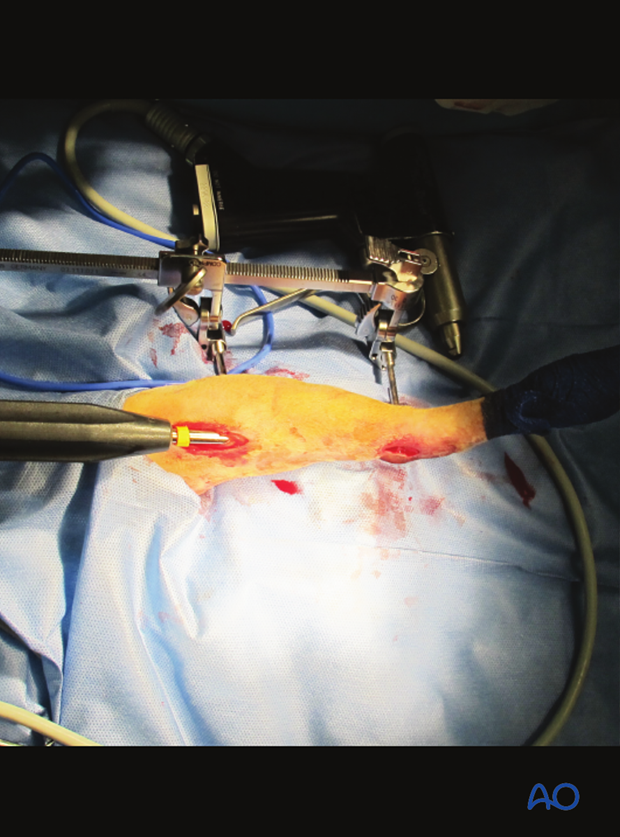Approaches for minimally invasive osteosynthesis (MIO) to the cat tibial shaft
1. Indications
The minimal invasive approach to the medial surface of the tibia is used for techniques that do not require exposure of the tibial shaft and direct reduction. This approach is commonly used in comminuted fractures.
2. Principles
Surgical approaches to the distal and proximal ends of the tibia are used for minimally invasive osteosynthesis. The following surgical approach has been described by Pozzi in VCOT 4/2009 316-320.
3. Proximal approach: skin incision
A linear incision is initiated 1cm proximal to the medial tibial condyle and extended distally for approximately 3cm.
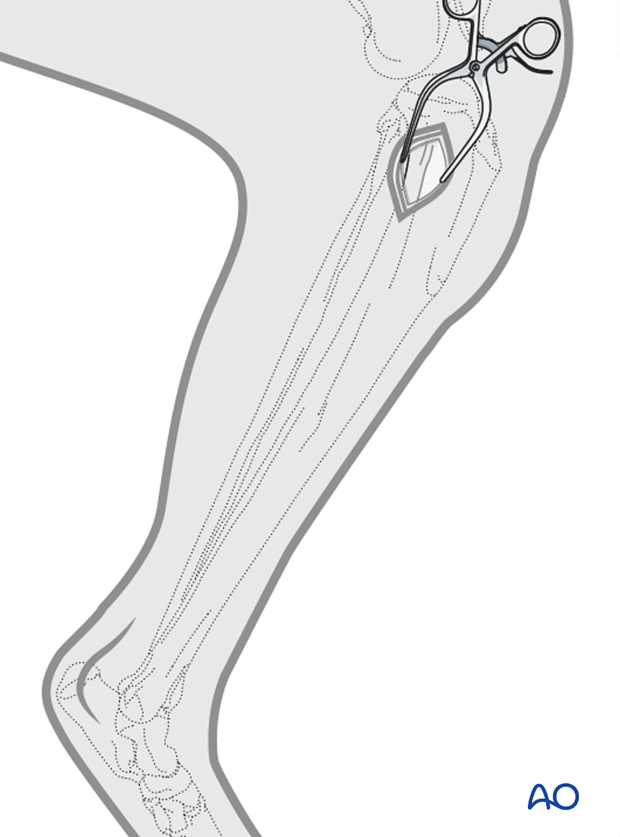
4. Exposure
The tendons of insertion of the sartorius, gracilis, and semitendinosus muscles are incised and elevated from the tibia. Caudal retraction of these muscles allows exposure of the medial aspect of the proximal tibia.
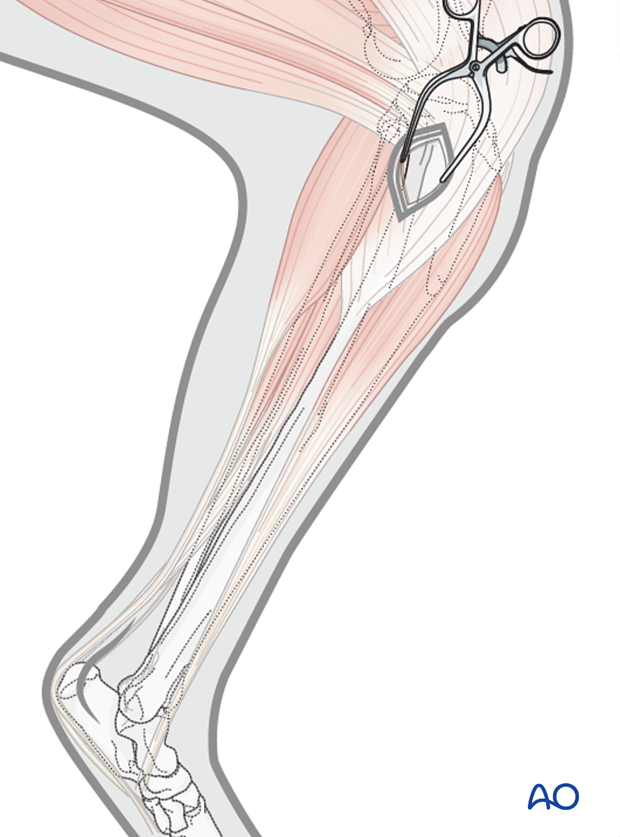
5. Distal approach: skin incision
A 2 to 4cm skin incision is made over the medial aspect of the distal tibia.
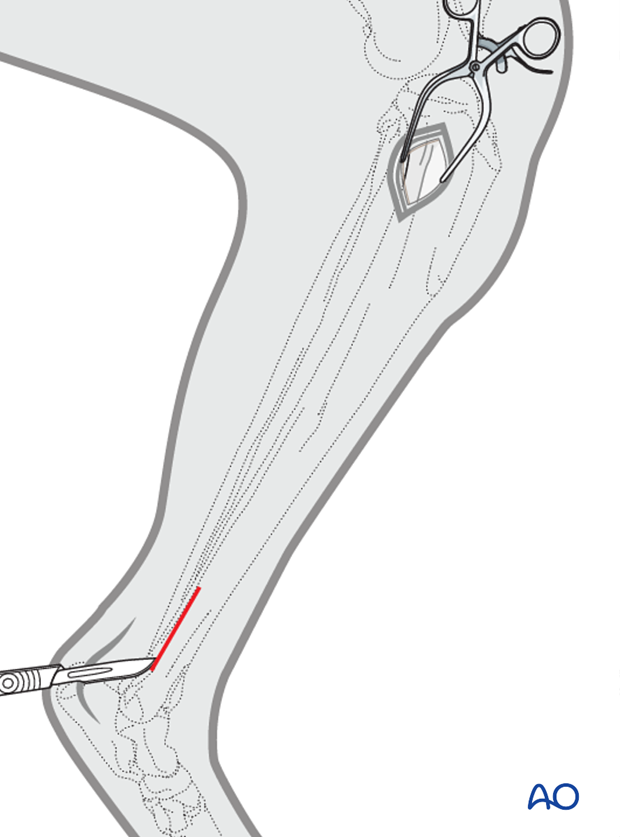
6. Exposure
Subcutaneous tissue and skin are retracted cranially and caudally.
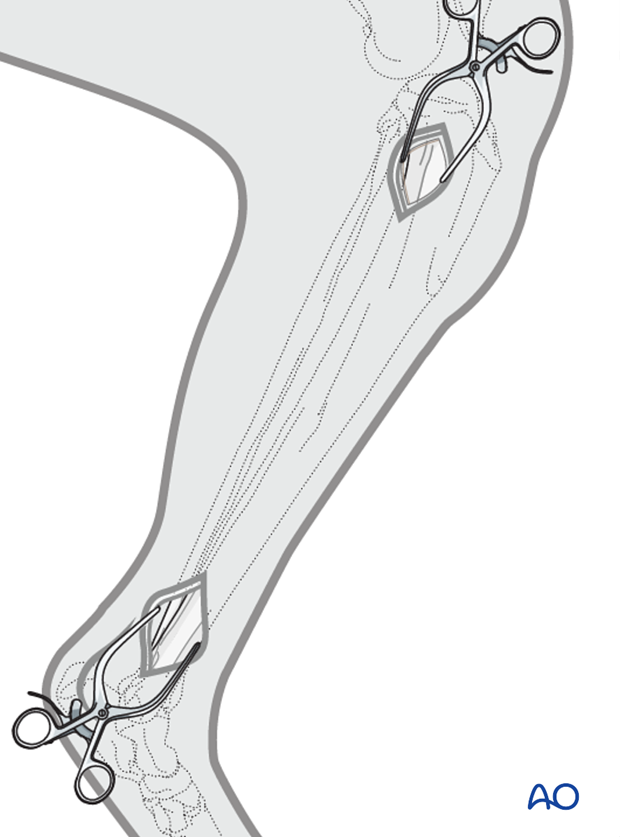
7. Creation of the epiperiosteal tunnel
An epiperiosteal tunnel is created from distal to proximal by carefully inserting long periosteal elevator until the tip of the instrument is seen through the proximal incision.
Note: sometimes the tunnel needs to be made from proximal to distal to have a clear path for the bone plate.
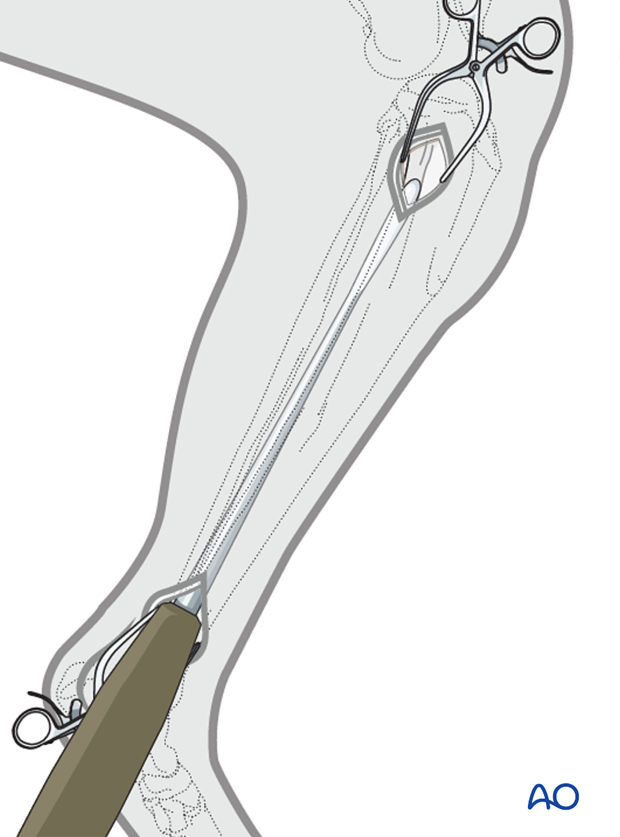
Creation of the epiperiosteal tunnel.
